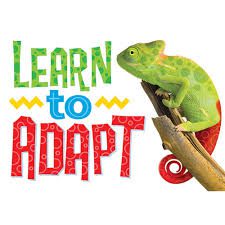You know that the only way to convince donors to give is…by asking them. You also know that if all you do is ask, they will get tired of hearing from you, quick.
People who give to your nonprofit organization want to know their donation is making a difference.
They may also want to hear more about the cause they care about, so they feel smarter and more well informed after receiving your message.
And occasionally, they may be happy if you just make them smile!
You can keep your donors happy with great storytelling and useful information through a variety of channels, from print to email to social media. You can even share the same content through those different channels. But you will not win any friends by automatically pushing the same message out through print or email as you do through Facebook or Instagram.
Adapt the content to the medium you're using if you want your donors to get the message. Share on XYour message in print
Fewer organizations are sending paper newsletters these days because of the cost of printing and mailing. If you are sending a print newsletter, that means you have less competition–but you have to make your donor want to read it. So:
- Write great headlines. If the headline is boring, your article will never be read.
- Include captivating photos. One person is better than a crowd, and a person in action is best. Make sure the caption reinforces the message.
- Use visual design to break up the page. Subtitles, bold and italic print, bullet points and plenty of white space will make your newsletter more inviting to the reader’s eye (and avoid the dreaded “wall of text”)
You can send a longer article in print than you can on electronic media as long as you follow these three tips. A longer article full of thoughtful content can seem more authoritative and more valuable than lots of short bites. Not everybody will read it, but those who do will come away feeling, “That was a good way to spend my time. I learned something.”
Your message by email
I see a lot of email newsletters these days–but few that are really done well. Email is different from print, and it’s vital to adapt your content to match.
Don’t:
- Email your print newsletter as a PDF. Many people cannot or will not open the attachment–and it sends the message that you’re stuck in 2006.
- Use the subject line “The Something Agency Newsletter.” The readers who don’t delete that message will file it away for later…and never get around to it.
- Cram it full of unrelated articles. Better to send more email, more often!
Do:
- Send the email in the name of a real person. For example, my email comes from Dennis Fischman, not just Communicate! Consulting.
- Write the subject line last. Once you know what the email is about, write an arresting title. Not “Our agency’s work in the public schools,” but “No sixth-grader should have a sexually transmitted disease”–readers will open that email!
- Make it mobile-friendly. More than half the email messages sent today are opened on a tablet or mobile phone. Make sure to reach over half your audience!
Your message by social media
Social media are different from print or email because, well, they’re social.
Before you think about sending a message through social media, try listening to your donors for a while. Find out what they’re interested in. Engage in conversations they’ve started. Try to act like a friend, not an advertising agency.
When you do have something to say on social media, though, remember that not all social media are created equal.
Facebook aims to be the Swiss army knife of social media. It’s possible to share short messages, longer posts, photos, links, and video all on the same platform.
It’s much harder, though, to make sure your followers see anything you put up. Fewer than 6% see any particular post, on average. So, you must aim to win the loyalty of your Facebook followers. If you can persuade them to sign up to be notified when you post, you’ve struck it rich.
Twitter is perfect for fast-breaking information. If you can get your followers to live-tweet your events, you will reach many more people than attend in person!
Twitter reaches an audience that’s hungry for information, so it’s an especially good medium for sharing links to your blog posts or newsletter articles. Because it moves so fast, the trick is to tweet the same material multiple times during a day or week. Use the same link but vary the text you use to attract readers to click the link. Also, use one to three hashtags with your tweet to let people who are interested search for that topic and find you.
Pinterest and Instagram are built around photos. With a camera in everyone’s pocket, it’s easy to snap photos, edit them, and place them in online albums you can share with supporters. Hashtags are even more important here, and you can use a greater number than on Twitter.
YouTube is still the premier place to share videos. Your agency can use video to capture interviews with people you help…or to say thank you to your donors.
There are plenty of other social media, and it’s important not to let that fact overwhelm you. I recommend starting small, and learning to use one medium very well.
Your message? It really belongs to the donors
No matter which channels you use, remember that your message must serve your donors–and not just your agency–if you want them to read, view, or listen to what you send. So, tailor your message to their interests even more than you adapt it to the communications channel you’re using. Your donors will thank you.


